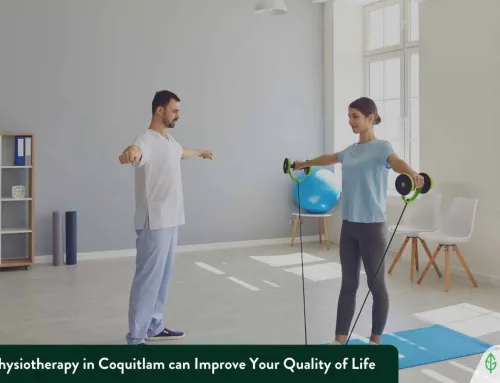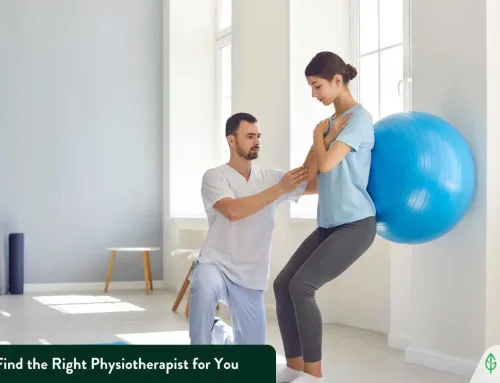In our everyday living, sitting for a long period of time promotes imbalances in muscular length and strength. We’ve been reading a lot about the detrimental consequences on the effects of prolonged sitting in recent years and even athletes who may not spend most of their time sitting may also experience having lower back problems.

If the pressure in your lower back and hips slows down, you may be suffering from Lower Cross Syndrome (LCS). In both the front and the back of the hip region, prolonged sitting produces a pattern of over- and underactive muscles.
“Cross” refers to the overactive muscles’ (and possibly tight and shortened) crossing pattern with the underactive (and possibly lengthened and weak) muscles’ counter crossing. In this general statement, this explains possible contributors to this postural trait.
What is Lower Cross Syndrome?

Like the upper cross syndrome, the lower crossed syndrome is one of the most common compensatory patterns and a postural disorder in the lower back, pelvis, and hip joints of the muscles. It is characterized by individuals displaying a postural lordotic posture in which the buttocks and stomach protrude.
This condition is a result of prolonged sitting and poor posture can worsen it. Pain is not part of this disorder, although the patient feels low back pain if this condition has occurred for a long period of time. Due to the tightness of the lower back extensor musculature and the psoas major and also to the tightening of the lumbar spine facet joints. This condition is termed facet syndrome.
The Causes:
Lower cross syndrome develops by the shortening of spinal muscles crossed with the growing shortening of hip flexors, weak buttocks, and abdominal muscles (muscles on the front). A characteristic pattern of strong hip flexor and low back extensor musculature along with weak anterior abdominal wall and gluteal musculature are the major cause of the said syndrome. The impact of these muscles on the thigh and spine is common.
Their postural impact on the pelvis, however, is fundamentally more important and needs to be addressed immediately. That being said, poor stance / poor level of understanding of how to execute everyday activities, insufficient preparation, one-sided discomfort, and too high tension in the lumbar region is the most common causes.
Lower Cross Syndrome Assessment
Patients with Lower cross Syndrome may experience pain in their lower back. With prolonged standing, intensified pain is experienced and flexion alleviates it. Except in the case of related piriformis syndrome where people feel sciatic pain, there is no irradiation of pain and no neurological effects. The patient also finds it uncomfortable to lay with stretched legs and prefer to lie with their knees bent.
The LCS assessment can be done through posture examination. To diagnose the pelvic cross syndrome, the needed practical examinations are:
- PROM-passive range of motion: often negative.
- AROM-active range of motion: extension of the lumbar leads to increased pain whereas trunk flexion relieves it.
- ROOM-resisted range of motion: usually positive for affected muscles. Length tests indicate muscle weakness (viz. gluteal muscles, abdominal muscles) and shortness (viz. rectus femoris, erector spinae, iliopsoas, quadratus lumborum) respectively.
Lower Cross Syndrome Tests
In detecting Lower Cross Syndrome several tests can be used. A Kemp’s test or orthopedic examination in which a patient is seated and the lumbar spine is bent and rotated simultaneously. A Thomas test is the one being applied as measurement for the flexibility of the hip flexors including the: iliopsoas muscle group, the rectus femoris, pectineus, gracillis as well as the tensor fascia latae and the sartorius.
The forward bending test also is known as the ‘Adam’s Test’ a forward bending test that is a standard test used by health professionals to evaluate a patient’s scoliosis. It’s a simple test that involves having a patient stand and bend over at a 90-degree angle. Performing the Gluteus Maximus and Psoas Major Strength Test and Schober’s Test to determine if there is a decrease in lumbar spine range of motion.
Lower Cross Syndrome Treatment
Lower Cross Syndrome should not be left untreated. In order to recover natural joint mobility, the locked joints of the hip, pelvis, and lumbar must always be adjusted by one or more modifications (manipulation). Fortunately, treatment is not harmful and you see changes in discomfort and function rapidly. This can be paired with coordinated strengthening and stretching of the weak muscles and ergonomic conditioning of the tight ones.
It is best to treat LCS under the supervision of a physical therapist who could monitor chronic symptoms and prescribe a personalized regimen of stretching and strengthening.
Lower Cross Syndrome Exercises
In order to improve optimum muscle function and improve the postural alignment of the lower back, it is also important to reinforce those muscles that have been stressed. Exercises are a great way to address Lower Cross Syndrome.
Hip flexor stretch

- Keep the body in an upright position and reach to the back foot, gently lifting it off the ground to feel a stretch at the front of the thigh.
- Repeat this 3 times on both sides.
The lower back cat

- On both hands and knees, arch the back upwards, tucking bottom under and chin to chest.
- Extend the spine and drop back downwards.
- Bring bottom back over feet.
- Repeat this for 12 times.
A supine ball squeeze

- Lie in a supine position in the place of a neutral spine.
- Trigger the abdominal core muscles.
- Breathe out and keep the contraction for 5 seconds and grip the medicine ball/chiball.
- For all adductor muscles, make sure there is an equal contraction. There is no glute activation or pelvic tilting for 12 times.
The Leg extension

- Extends one leg away from the body respectively for 3 sets of 10 on each side.
Bridges

- Lie backward with hands, taking a breath to brace. Pressing through the midfoot during exhalation to lift the hips and trunk off the surface. Triggering the complex of gluteus maximus and hamstring.
- Keep on for one count. To return to the surface, exhale.
- For one count, inhale to rest, then exhale to repeat the action.
- Ensure that the neutral spine is preserved and that the lumbar spine should not over-extend
- Repeat 10 times.
You may also do a bridge exercise progression.
Doing a pelvic tilt exercise can also help.
It’s not yet too late to fix your posture
Before your postural issue can give you chronic pain, you need to take an immediate assessment with a licensed physiotherapist. And, we are here to help you. Our Physiotherapists in Coquitlam can assess your postural issues and can help you fix your condition.
You may also book for a physiotherapy session here.
Evergreen is Everywhere for Everyone – Let’s Help You Achieve Your Health and Wellness Goals
At Evergreen Rehab & Wellness – Coquitlam, we have Physiotherapists that will help you achieve your health and wellness goals.
We don’t only have Physiotherapists in Coquitlam, we also have Physiotherapists in Langley that are always ready to provide patients in these areas with custom and high-quality care.
Sign-Up Today!
Get the daily those of health and wellness tips and the latest offers across our clinics.





